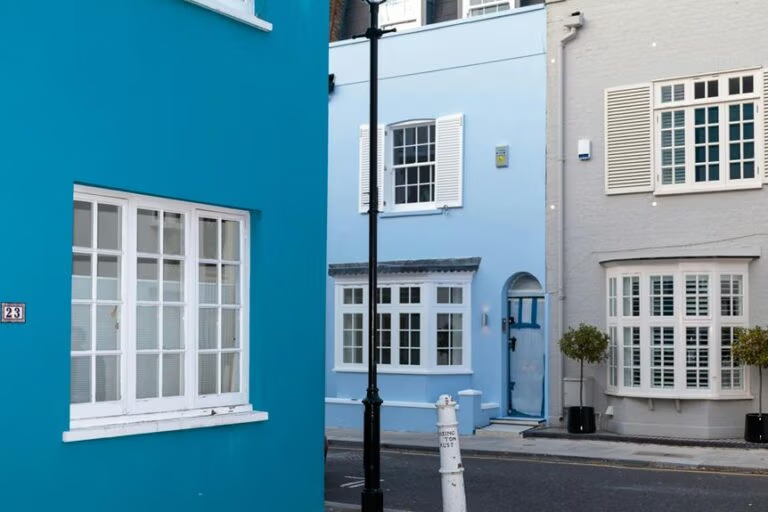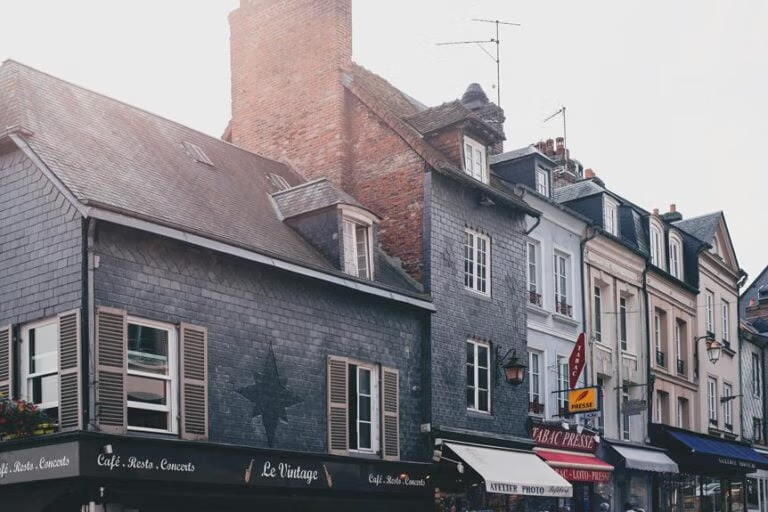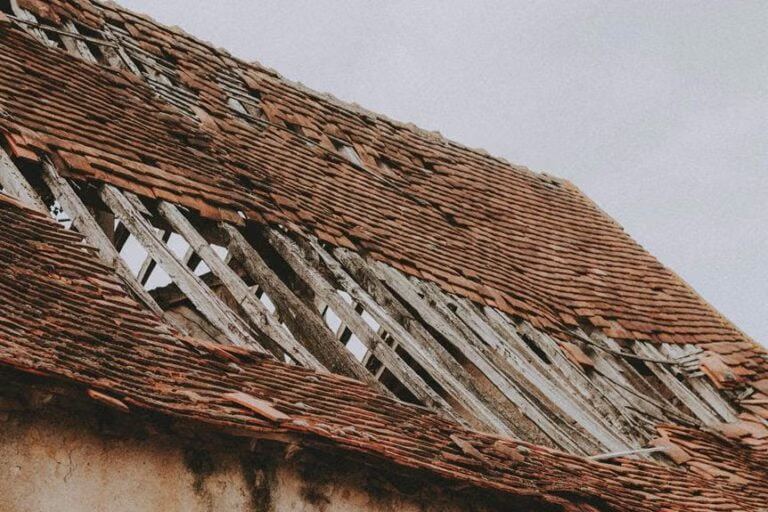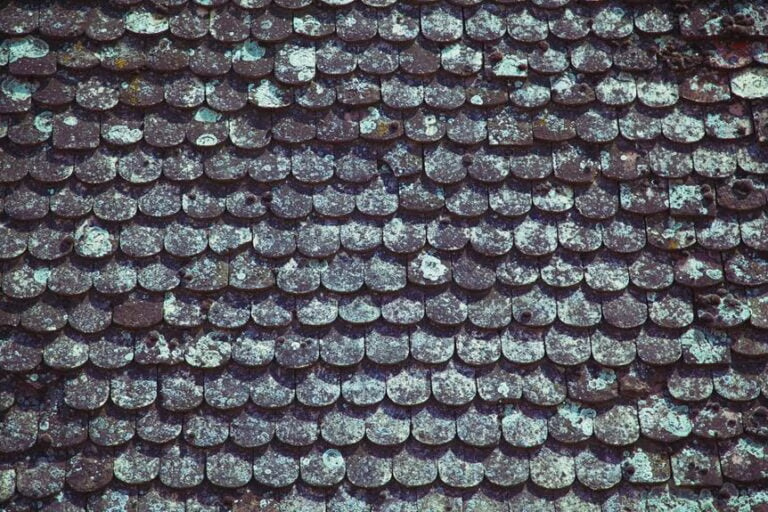Yes, roofing shingles can be painted, which not only enhances their aesthetic appeal but also provides additional protective benefits such as increased UV resistance and extended material lifespan. The process involves key preparation steps, including thorough examination and cleaning of shingles, application of a suitable primer, and caulking any potential leaks.
The best choice of paint for roofing is usually acrylic latex due to its durability and resistance to environmental factors. While painting shingles can improve energy efficiency and boost property value, it’s essential to take into account the potential long-term maintenance and durability implications. Exploring the various dimensions of this topic could further illuminate practical insights.
Key Takeaways
- Roofing shingles can be painted to enhance aesthetics and offer UV protection, increasing their lifespan.
- Proper preparation, including cleaning and priming, is essential for effective paint adhesion on shingles.
- Acrylic latex paint is recommended for its durability and suitability for exterior roofing materials.
- Painting shingles can lead to potential risks such as accelerated wear, color fading, and reduced weather resistance.
- The process can be cost-effective compared to replacing shingles, potentially boosting property value and curb appeal.
Types of Roofing Shingles
Roofing shingles, commonly made from materials such as asphalt, wood, metal, or slate, vary widely in their durability, cost, and aesthetic appeal. Each type presents a unique set of characteristics that cater to different weather conditions, architectural styles, and personal preferences, empowering homeowners with the freedom to choose according to their specific needs.
Asphalt shingles are among the most popular due to their cost-effectiveness and versatility. They come in various colors and styles, easily adapting to numerous home designs. Their composition of fiberglass mat coated with mineral granules provides a reliable barrier against weather elements, making them a practical choice for many climates.
Wood shingles, on the other hand, offer a natural aesthetic that can enhance the rustic or traditional appearance of a home. Typically made from cedar or redwood, wood shingles are praised for their beauty and natural insulation properties but require more maintenance compared to asphalt.
For those in search of durability and longevity, metal roofing and clay tiles are exceptional. Metal roofs are resilient, energy-efficient, and available in sheets or tiles. Clay tiles, celebrated for their classic beauty, perform remarkably well in hot climates and can last for decades, embodying a timeless appeal.
Benefits of Painting Shingles
Painting shingles offers several advantages, including enhanced aesthetic appeal and increased UV protection, which can extend the lifespan of the roofing material. By adding a specialized coating, homeowners can achieve not only a fresh and unique look but also enhance the overall durability of their roof. This process can serve as a protective barrier that shields the shingles from various elements, contributing to increased longevity.
Here are a few key benefits of painting shingles:
- Enhanced Aesthetics: Painting your shingles allows for customization in your home’s exterior appearance. You can choose from a wide range of colors to match your personal style or to complement the surrounding environment. This flexibility can greatly boost curb appeal and potentially increase the property’s market value.
- Increased UV Protection: The right type of paint can reflect UV rays, reducing the heat absorbed by the shingles. This not only prolongs the life of the roof but can also contribute to lower cooling costs during warmer months, promoting energy efficiency.
- Cost-Effective Maintenance: Compared to replacing shingles, painting can be a more economical way to extend the roof’s life and enhance its appearance. Regular maintenance, including painting, can avert the need for more substantial repairs, saving money over time.
Necessary Preparation Steps
Before applying paint to shingles, it is important to undertake thorough preparation to ensure the best adherence and durability of the coating. This process begins with meticulous surface cleaning, which is vital to remove any dirt, dust, mold, or debris that could hinder the paint from bonding properly. Using a high-pressure washer can be effective, though care must be taken to avoid damaging the shingles.
Following the cleaning, an important step is the application of a primer. The right primer sets a foundation that enhances the paint’s adherence and extends the life of the paint job. It’s important to select a primer specifically designed for roofing materials and the type of shingles you have.
Below is a table outlining the necessary preparation steps:
| Step | Description | Considerations |
|---|---|---|
| Inspection | Check for damaged or loose shingles. Replace or repair as necessary. | Ensure the structural integrity. |
| Surface Cleaning | Use appropriate tools to clean the roof thoroughly. | Avoid using excessive pressure. |
| Primer Application | Apply a suitable primer to create a solid base for the paint. | Choose the primer based on shingle type. |
| Additional Prep Work | Caulk and seal any potential leaks or weak spots. | Prevent potential water damage. |
Adhering to these steps not only prepares the surface but also empowers homeowners to maintain the integrity and appearance of their roofs.
Choosing the Right Paint
Choosing the right paint for roofing shingles is vital for ensuring longevity and peak performance in different weather conditions. The selection process should prioritize products specifically formulated for exterior use on roofing materials, capable of withstanding harsh environmental elements without fading or chipping prematurely. When choosing paint, consider the following practical and detailed aspects:
- Type of Paint: Acrylic latex paint is highly recommended due to its durability, ease of application, and environmental resistance. It adheres well to shingle surfaces, providing a protective layer that enhances both function and aesthetics.
- Paint Color: Selection should be influenced by factors such as climate and the thermal properties of colors. Lighter shades reflect sunlight and heat, making them ideal for warmer regions, whereas darker tones might be preferred in colder areas for their heat absorption properties.
- Application Techniques: Employing the right techniques is important for achieving optimal results. Use a sprayer for even coverage and penetration into the shingle texture. Ensure that the painting is done during suitable weather conditions to facilitate proper drying and adhesion.
Choosing paint that aligns with these guidelines not only improves the appearance of your home but also contributes to energy savings and property value enhancement, offering a sense of freedom and satisfaction in maintaining your home’s appeal and functionality.
Potential Drawbacks and Risks
While selecting the appropriate paint for roofing shingles is essential, it is equally necessary to take into consideration the potential drawbacks and risks associated with this approach. One of the most significant concerns is the long-term durability of painted shingles.
Traditionally, roofing shingles are manufactured with specific materials and coatings designed to withstand harsh weather conditions and UV exposure. Paint, however, may compromise these inherent protective qualities, potentially leading to accelerated wear and tear. The result could be a shorter lifespan for your roof, necessitating more frequent replacements or repairs.
Another vital aspect to ponder is color fading. Paint applied to roofing shingles is prone to losing its vibrancy over time due to continuous exposure to sunlight and environmental elements. This fading can lead to an uneven appearance, diminishing the aesthetic appeal of your home. Furthermore, frequent touch-ups may be required to maintain the original color integrity, adding to the overall maintenance cost.
It is important for homeowners to weigh these risks against the benefits of painting shingles. While painting might offer a temporary aesthetic upgrade or customization, the potential for increased maintenance and reduced durability should not be overlooked. Making an informed decision will help guarantee that the freedom to customize doesn’t come at the expense of practicality and longevity.
Frequently Asked Questions
How Does Painting Shingles Affect a Home’s Resale Value?
Painting shingles can enhance exterior aesthetics and property curb appeal, potentially increasing a home’s resale value. However, the impact varies depending on the quality of the paint job and the original shingle condition.
Can Painted Shingles Be Recycled or Repurposed?
Ironically, while painted shingles add aesthetic appeal, their recycling options are limited. However, repurposing ideas abound, from creating garden pathways to innovative art projects, offering a touch of freedom in their second life.
Are There Eco-Friendly Paint Options for Shingles?
Yes, there are eco-friendly paint options for shingles that utilize sustainable ingredients and low-VOC formulations. These options support environmentally responsible painting techniques, aligning with the values of those seeking greater ecological freedom.
How Long Does Painted Shingle Color Typically Last?
Paint longevity on shingles typically spans 5 to 10 years before maintenance is required due to fading and discoloration. Regular upkeep guarantees continued aesthetic appeal and the freedom from frequent, extensive renovations.
Does Painting Shingles Affect Manufacturer Warranties?
Painting shingles often impacts manufacturer warranties, potentially voiding them due to altered maintenance concerns. Review your warranty details carefully to understand any implications on coverage before proceeding with such modifications.
Conclusion
To sum up, the practice of painting roofing shingles, while feasible, demands meticulous preparation and the selection of appropriate materials to guarantee durability and aesthetic appeal. The process, when executed properly, offers enhanced UV protection and revitalization of aged roofs.
However, potential risks such as moisture retention and premature deterioration necessitate careful consideration. Ultimately, the decision to paint roofing shingles should be informed by a thorough evaluation of benefits against possible long-term complications.






